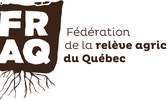Public hearings on “farmland grabbing”
Is Outaouais’ farmland in the crosshairs of private equity funds?
Laurent Robillard-Cardinal
The provincial government announced March 2 that it is holding public hearings on “farmland grabbing”, March 16 and 17. Held by the Committee on Agriculture, Fisheries, Energy and Natural Resources, the hearings will have speakers from the agricultural community, financial, academic and municipal sectors. “With this phenomenon growing in Québec, we feel it is essential to start thinking about it. We intend to build on the experience of those directly affected by the phenomenon to better understand the issues affecting Québec agriculture,” said Commission President, Pointe-aux-Trembles’ MNA Nicole Léger. The committee’s goal is to gain an overview of the situation by, among others, studying the business models used by investors.
The phenomenon is characterized by private equity funds purchasing large blocks of land at a high price, contributing to an inflation of farmland values. West Québec, because of its geography, is not in as alarming a situation as other regions in the province. “Outaouais is too spread out to get a concentration of land big enough to make this worthwhile. It’s all small acres and valleys. You generally need flat land,” said Gib Drury, Executive Member of Quebec Farmers’ Association (QFA). “Investors generally want a minimum block of a 1,000 acres, not 100 or 200 acres.”
Pontiac affected
However, Guillaume Charest-Hallée, planner with Union des Producteurs Agricoles du Québec (UPA) Outaouais-Laurentides, says “farmland grabbing” includes facets which do affect West Québec. “What’s more alarming in Outaouais, in recent years, is the purchase of (farm) land by people who live outside the province. We will table a report addressing this issue. This form of ‘farmland grabbing’ is a concern for us in Outaouais,” said Charest-Hallée. Many foreign acquisitions are concentrated in the Pontiac.
Farmland grabbing includes buying farmland outside cities’ urban perimeters. “This phenomenon is evident on Montréal’s north shore, but it’s hard to document. Investors will purchase property outside the urban perimeter with no intention of farming the land,” explained Charest-Hallée.
This phenomenon results in urban sprawl, as took place in Aylmer a dozen years ago. Groups of investors from Ontario purchased land outside the urban perimeter, and waited (some are still waiting) for the city to grow and the urban perimeter to expand. As cities grow, the land’s value increases as builders eye them for development. The Fédération de la relève agricole Québec (FRAC) launched a petition several months ago and have more than 2,800 signatures.
FRAC argues that farmland assemblage makes agricultural land inaccessible to young farmers. “The price of land does not seem to be their [investors] main concern. In some regions, an acre can go for $15,000 to $20,000 but from a production point of view the land is only worth $3,000 or $4,000 an acre,” noted Drury. “Those amounts ($15,000-$20,000) are certainly unrelated to the productive value of the land.”
The FRAC states that young farmers cannot compete against these funds nor pay their rent. Once investors purchase large lots they still look for tenants. According to John McCart, QFA president, graduates from agricultural college will not be motivated to farm if investors buy up large tracts of land. The FRAC maintains that the financial model adopted by equity funds aims to make a speculative profit and does not encourage the economic development of local communities. This practice will progressively diminish the number of farms, mainly livestock farms, says the FRAC. Investors buy the land because they know the land’s value will not decrease.
The UPA has proposed a provincial fund to purchase large strategic lots to favour the development of agriculture. “The present government is not open to this proposition, therefore we are looking at other avenues which include giving more power to the Commission de protection du territoire agricole (CPTAQ),” said Charest-Hallée. The idea would be to allow the CPTAQ to block the acquisition of large lots by buyers who don’t intend to farm.
Another idea is to restrict the amount of land investors can buy by enforcing a limit of 100 hectares (247 acres) of land. “It would permit more people to get into farming,” said John McCart.


